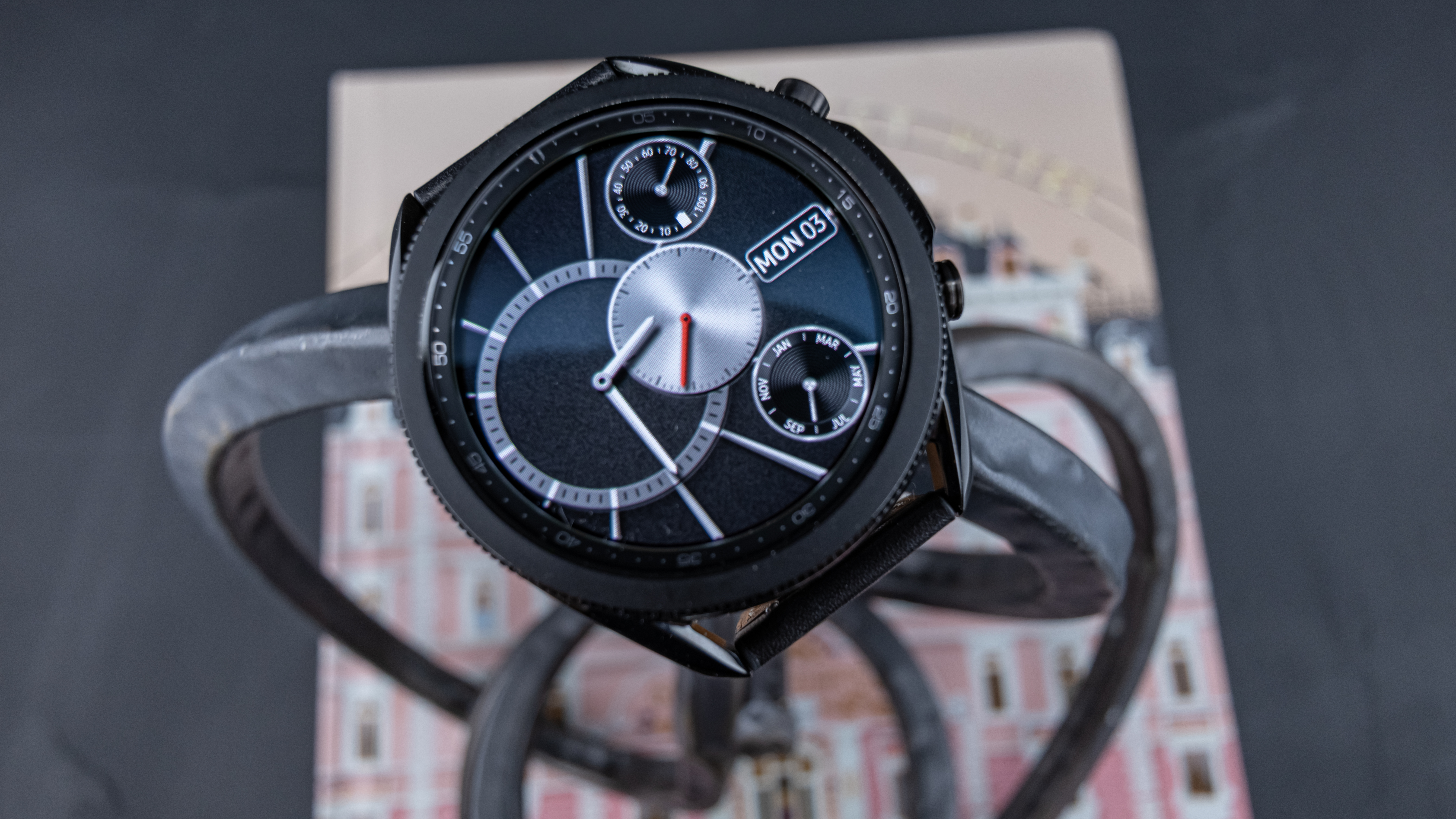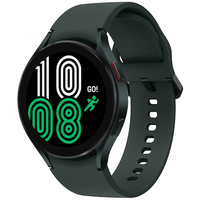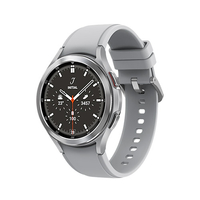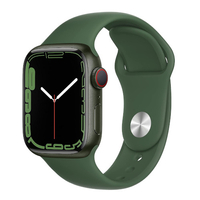TechRadar Verdict
The Samsung Galaxy Watch 3 continues to offer one of the better smartwatch experiences on the market, with a dazzling design and top-end spec that allows it to run as smoothly as any other wearable of this age and still compete with newer watches. It isn’t faultless, and its improvements over the original Galaxy Watch are limited, but if the middling battery life or high price don’t put you off this may be perfect for you.
Pros
- +
Great, premium design
- +
Rotating bezel is useful
- +
Strong fitness features
Cons
- -
Battery could be better
- -
Tizen’s apps are limited
- -
High price
Why you can trust TechRadar
Two-minute review
The Galaxy Watch 3 isn't the latest model in the line any longer, but as our Samsung Galaxy Watch 3 review will demonstrate, it's still well worth considering.
This isn’t the perfect smartwatch, but it has a dazzling design, a vivid display, and a variety of new fitness features to help you track your progress across a wide range of activities, and stay motivated.
Samsung has stuck with a traditional-looking circular display shape, and a rotatable raised bezel that enables you to physically cycle through on-screen menus. It’s tactile, and that click, click, click as you navigate the round interface feels satisfying.
It looks better than the first-generation device as well - the design is slimmer (and lighter), making for a more svelte-looking device that could compete with the likes of the Apple Watch 7 in a beauty contest.
The new fitness features improve the activity tracking that you expect to get from any smartwatch now and includes an electrocardiogram - something that wasn't so common back in those days, as well as fall detection too.
The battery life on the Galaxy Watch 3 could be better, but it’s not disappointing if you’re happy to put your smartwatch on charge for a few hours after a couple of days. If you’re expecting a device that can last weeks, however, you probably won’t want to read on any further.
If you’re looking for the best smartwatch to pair with an Android phone, you want the Samsung Galaxy Watch 4, but this comes close. If you own an iPhone, this may still even beat some older Apple Watches if you’re looking for a circular device rather than Apple’s trademark squared design and you like what you see.
Samsung Galaxy Watch 3: release date and price
- Out now
- Starts at $399 / £399 / AU$649
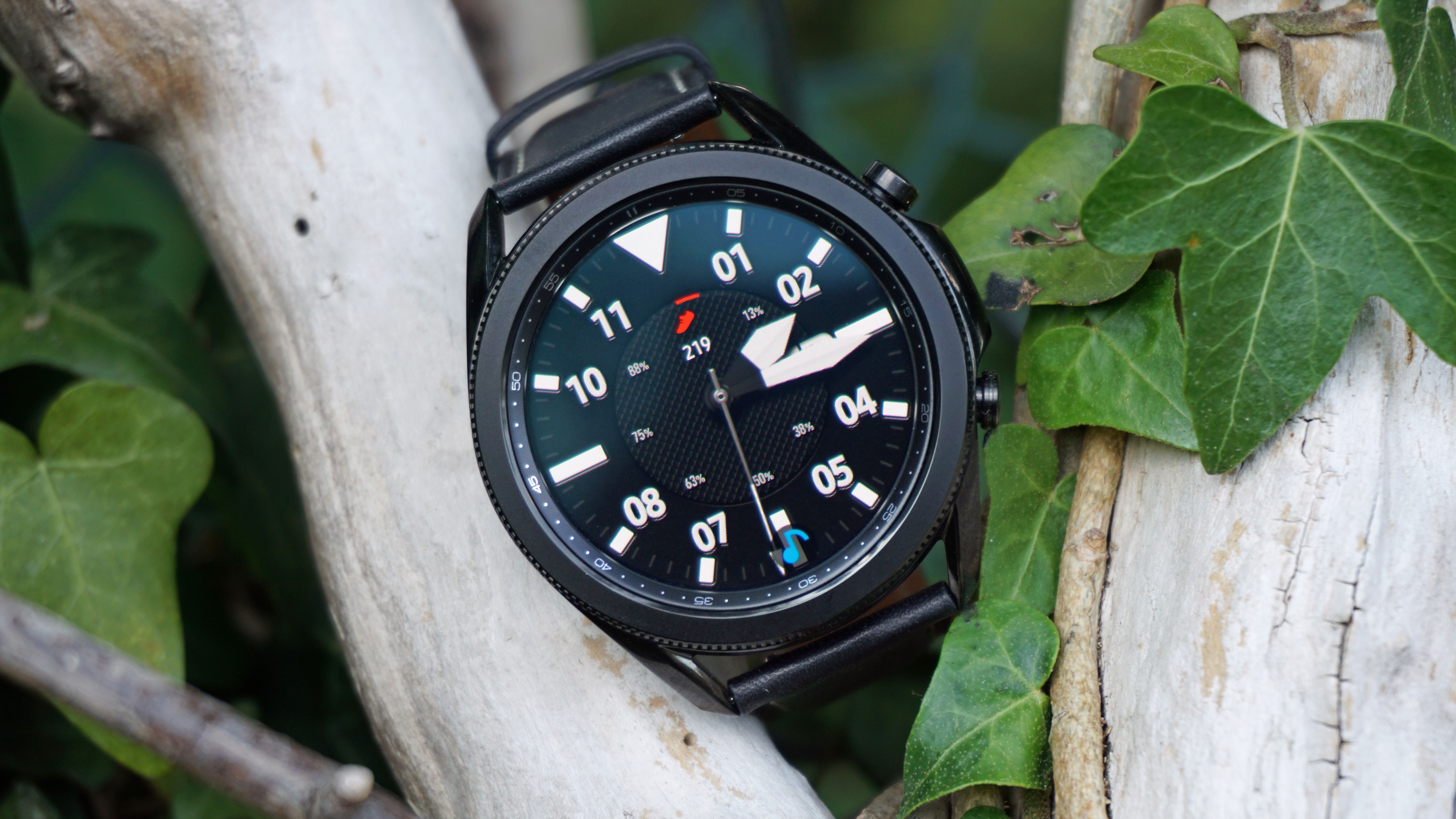
Screen sizes: 41/45mm
Weight: 48.2g/53.8g
Software: Tizen OS 5.5
RAM: 1GB
Storage: 8GB
GPS: Built-in
Battery capacity: 247 / 340mAh
Wireless charging: Yes, Qi
The Samsung Galaxy Watch 3 was unveiled alongside the Galaxy Note 20 and Galaxy Note 20 Ultra at the company’s virtual Unpacked launch for 2020. That took place on August 6, so it's getting much trickier to track down the Samsung Galaxy Watch 3 now. Not least because the Samsung Galaxy Watch 4 range is now available.
The Samsung Galaxy Watch 3 price was originally $399 / £399 / AU$649 for the smaller 41mm model, and $429 / £419 / AU$699 for the larger 45mm version. LTE connectivity raised the price further, to $449 / £439 / AU$799 for the 41mm version, and $479 / £459 / AU$849 for the 45mm variant.
Expect to find it much cheaper now, although you may have to stick with a refurbished model if you're desperate to get hold of one.
Samsung Galaxy Watch 3: design and display
- 1.2-inch or 1.3-inch circular AMOLED screen
- 360 x 360 resolution
- Slim, light and comfortable
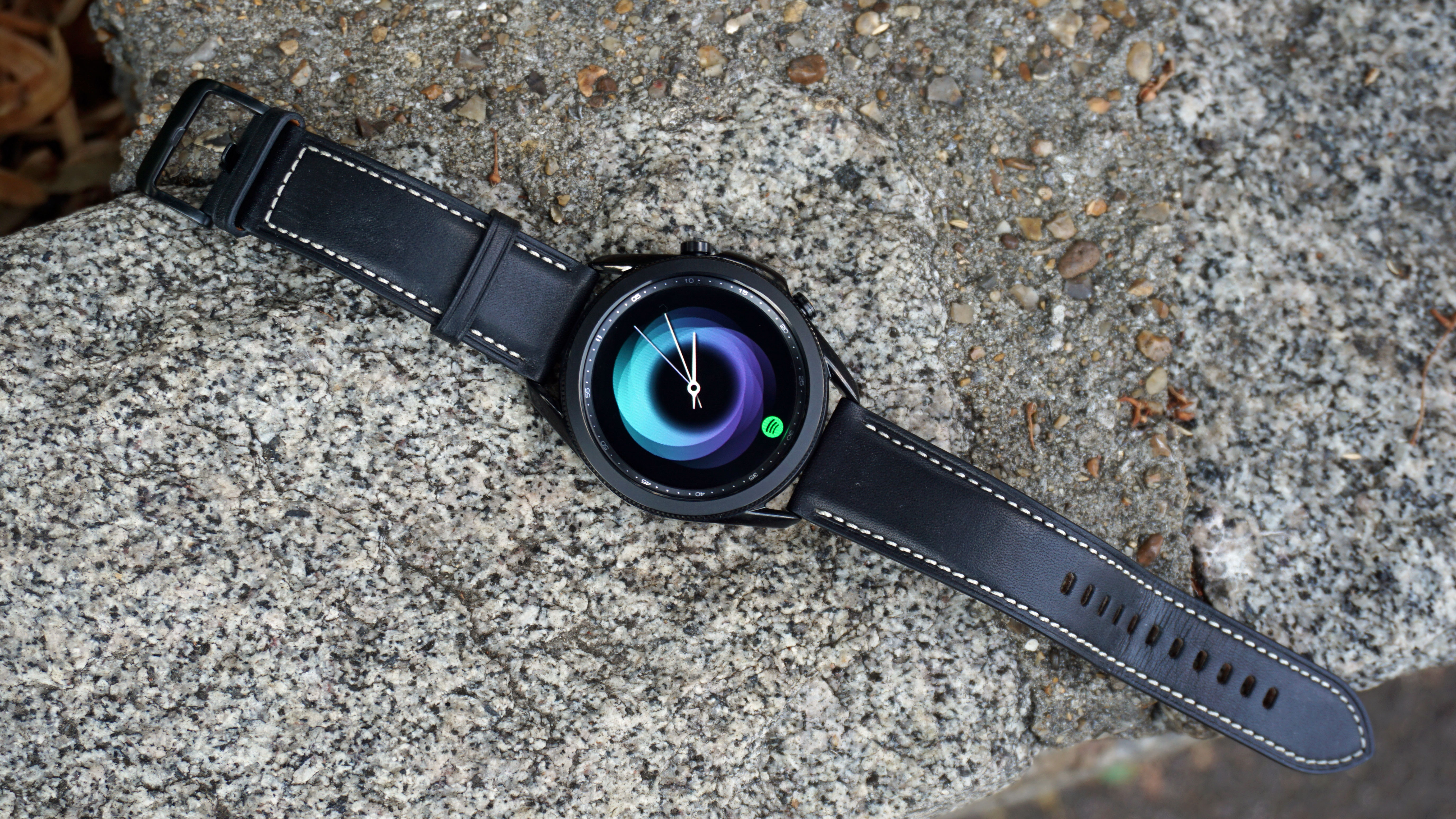
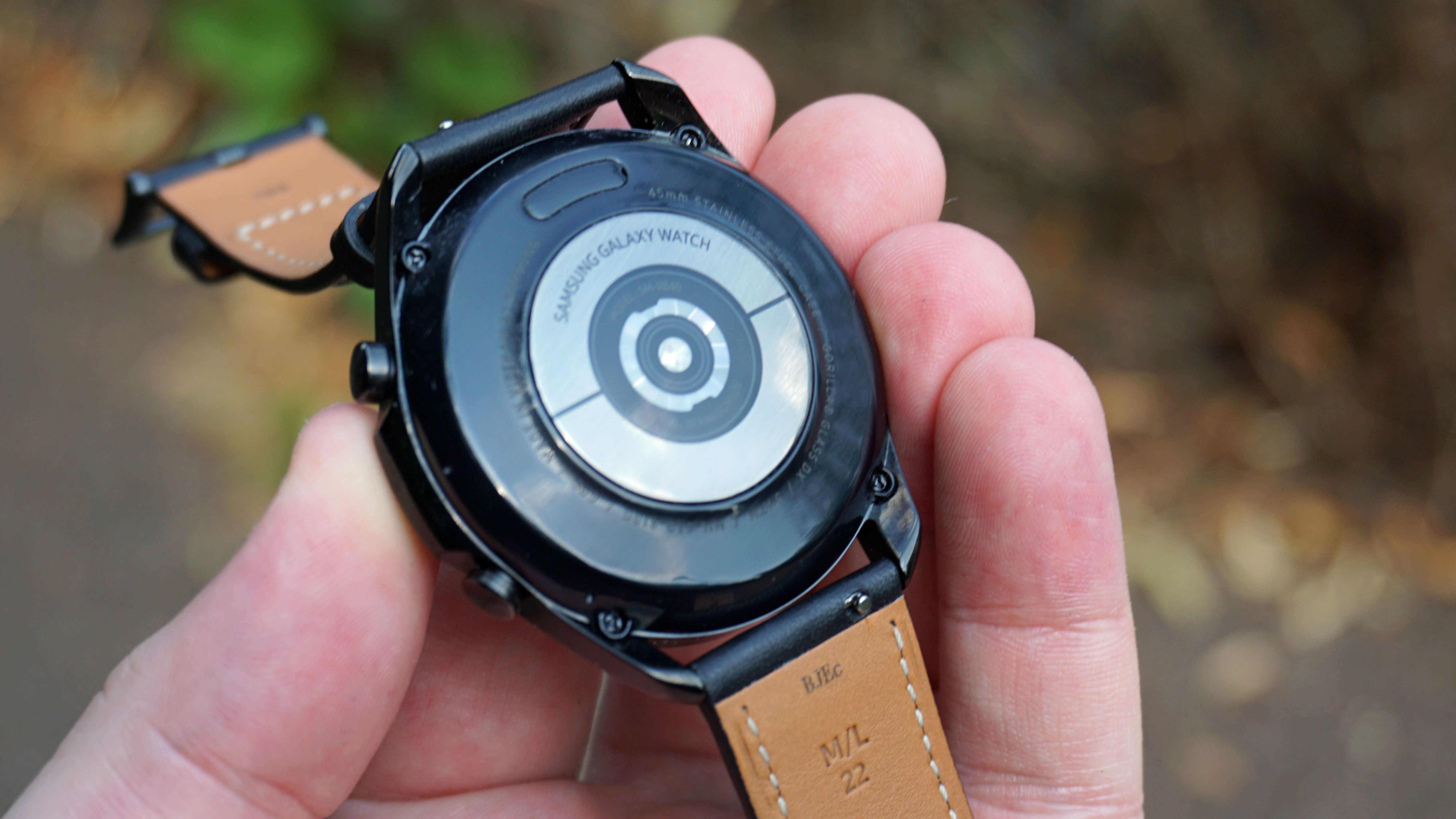
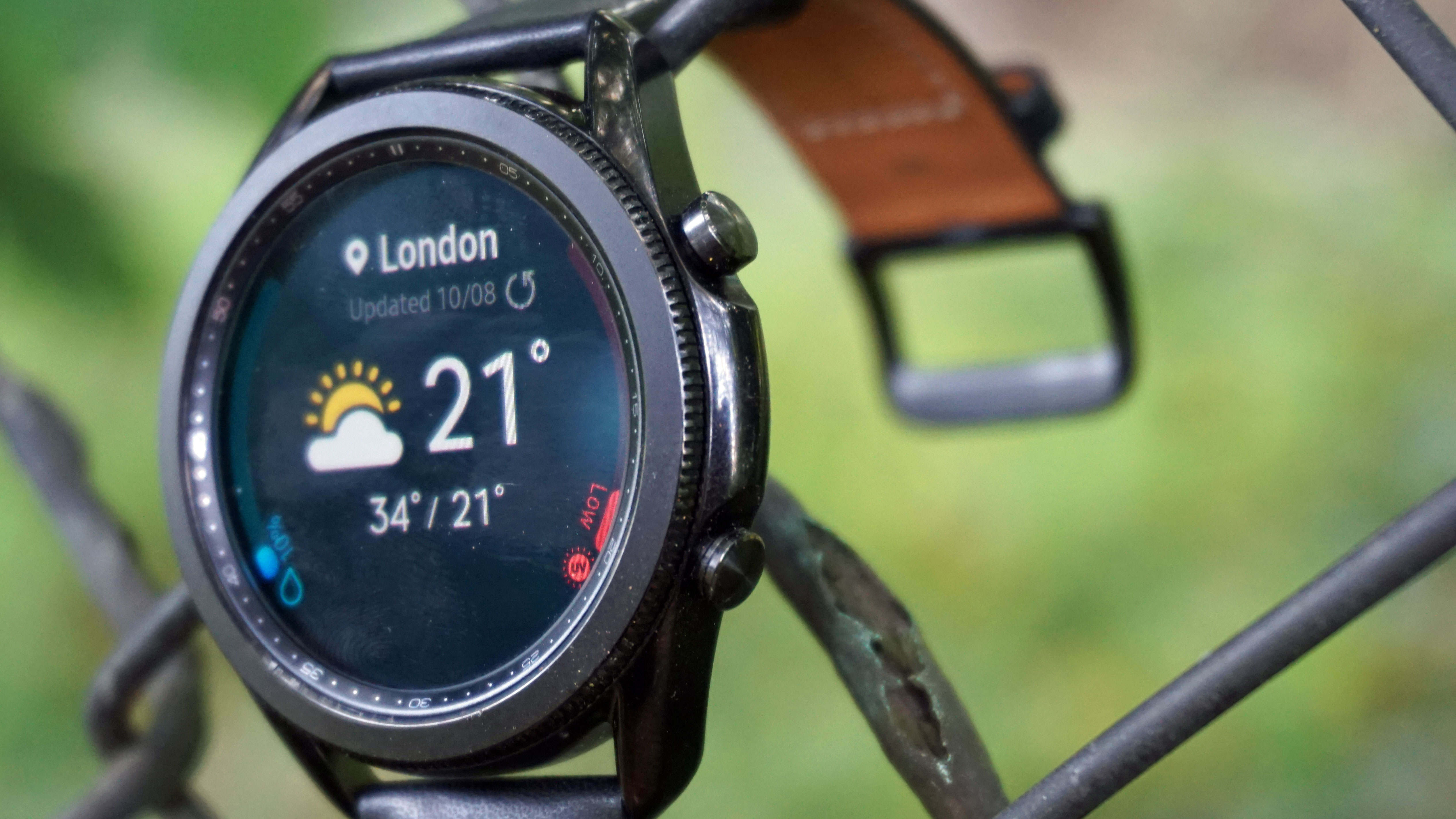
The Samsung Galaxy Watch 3’s design is more refined than the original Galaxy Watch, and the design team has engineered another smartwatch masterpiece here. It’s slimmer, lighter, and more comfortable to wear than the original device.
You have the choice of two sizes, with a 41mm being the smaller option, and a 45mm model for those who prefer a larger watch on their wrist. For the purpose of this review we’ve tested the 45mm variant, so elements of the user experience with the smaller model may differ slightly.
The core features are the same across both models, with just a couple of small differences in the specs.
You’re getting a 1.2-inch (41mm) or 1.3-inch (45mm) Circular Super AMOLED panel, with a full-color always-on display. From our time with the larger watch we’ve found this to be the perfect size, as it was on the original 45mm device.
The display has a resolution of 360 x 360, which at this size is perfect for looking at stats and swiping through the menus. The device is protected by Corning Gorilla Glass DX; for some reason it’s not DX+ as on the original Watch, and we’re not sure why, or what it means - we’ve reached out to Samsung for an explanation.
The display is bright and easy to read in all types of light, so you shouldn’t struggle to see this screen even when you’re exercising outdoors.
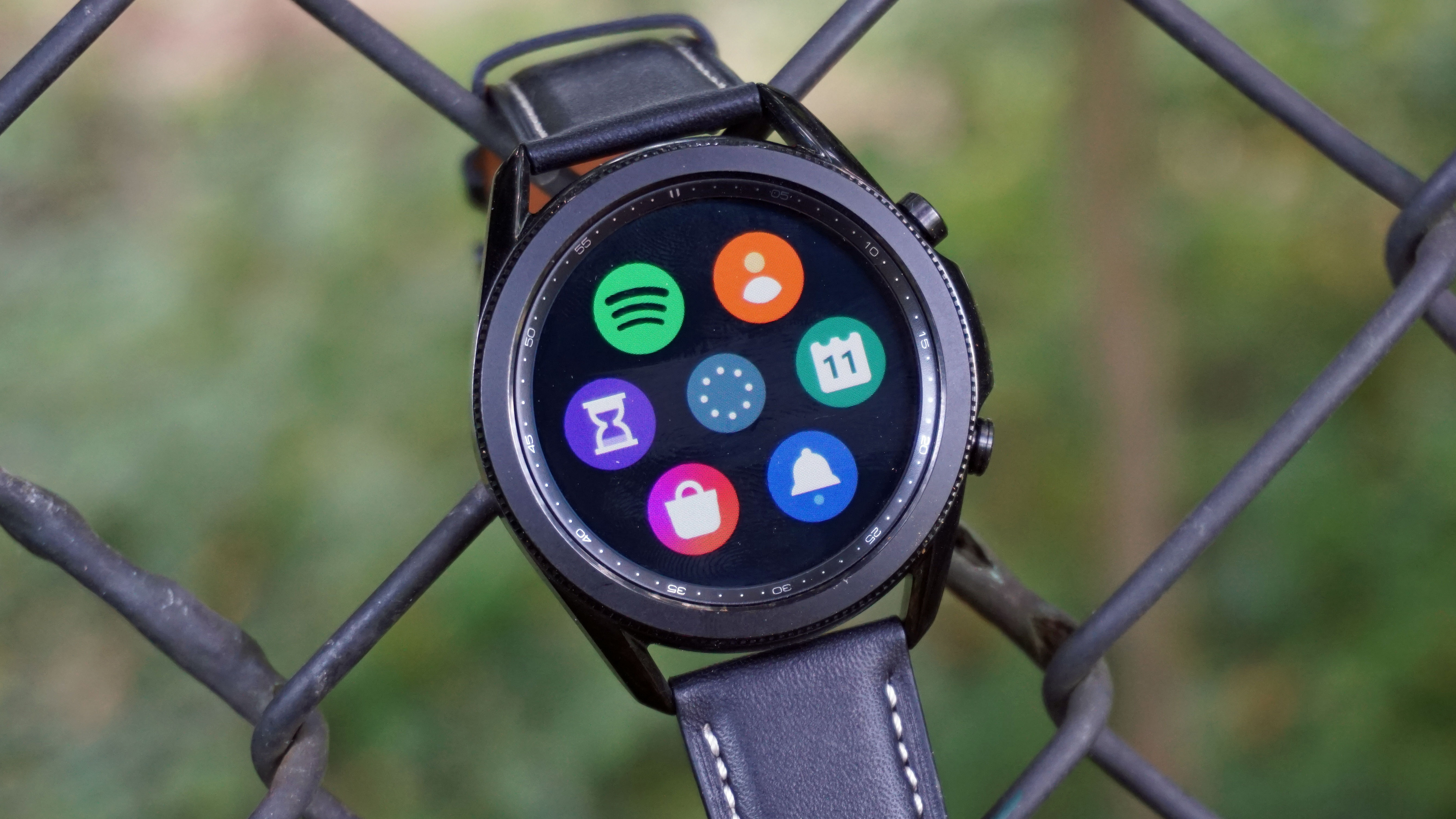
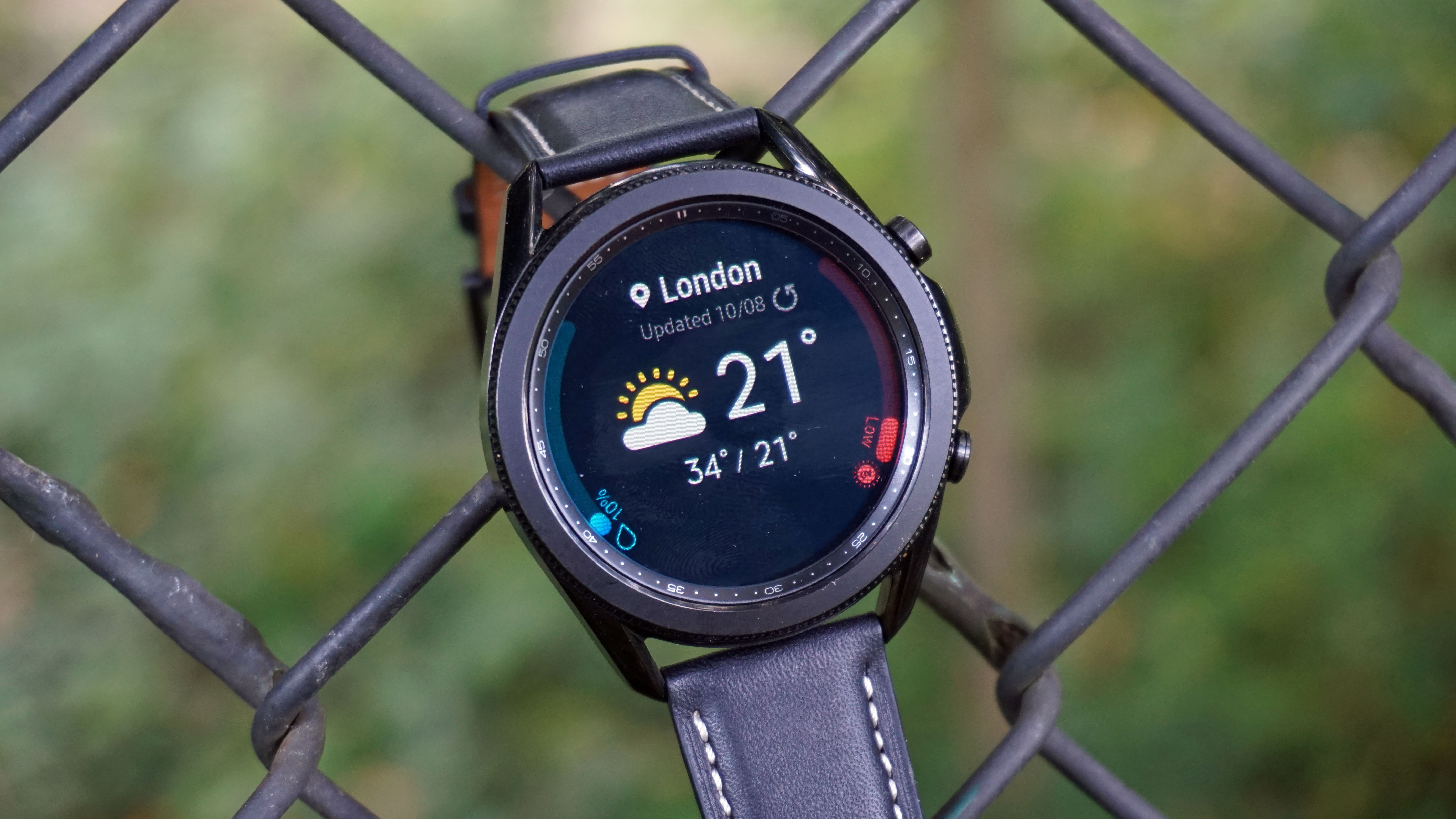
The Samsung Galaxy Watch 3 is 14% slimmer than the original Galaxy Watch, yet keeps the same attractive circular screen shape and size. The ornate rotating bezel that doubles as a way to navigate the on-screen menus also remains, albeit in a less chunky state.
Both variants of the watch come in stainless steel, with the 45mm weighing 53.8g and the 41mm 48.2g. There’s also a new extra-light titanium model, which is only available in the 45mm size and weighs 43g. This isn’t currently on sale yet, but we’re expecting it to cost extra.
We found the Galaxy Watch 3 to be comfortable to wear casually as well as during workouts - it’s not going to be as trim as a fitness tracker, but if you’re looking for a smartwatch this is going to be a comfortable choice.
So what colors can you get? You can see the Mystic Black finish pictured throughout this review, and the 45mm Watch 3 also comes in a Mystic Silver version that’s slightly lighter. Both variants come with black leather straps.
If you opt for the smaller 41mm device you’ll have the choice of Mystic Silver or Mystic Bronze colors. Both of these also come with leather straps, so whichever size and color combo you opt for you’ll have to spend extra on another strap if you want a more fitness-friendly silicone material.
The 45mm is compatible with all 22mm straps, and the 41mm device is designed for use with 20mm straps.
Samsung Galaxy Watch 3: performance and software
- Dated chipset yet reasonable performance
- 1GB of RAM and 8GB of storage
- Runs Tizen, not Wear OS
The Galaxy Watch 3 is running on the same chipset that powered the original Galaxy Watch from Samsung, which may disappoint some, although we didn’t find this to be an issue when using the smartwatch.
Apps loaded as quickly as we’d expect them to, and that’s partly due to the 1GB of RAM included here, which seemed to be enough. An odd element is the LTE version of the original Galaxy Watch sported 1.5GB of RAM, but the company has seen fit to drop that here.
Processing power isn’t often a major thing on a smartwatch though – there’s less to run here than on a typical phone – and we found that the Samsung Galaxy Watch 3 continued to perform well throughout our entire time testing it.
All versions of the device come with 8GB of storage, and we found the OS and pre-loaded apps were already using 3.59GB of this space, so if you want to fill your watch up with apps and music you’ll have around 4GB to use.
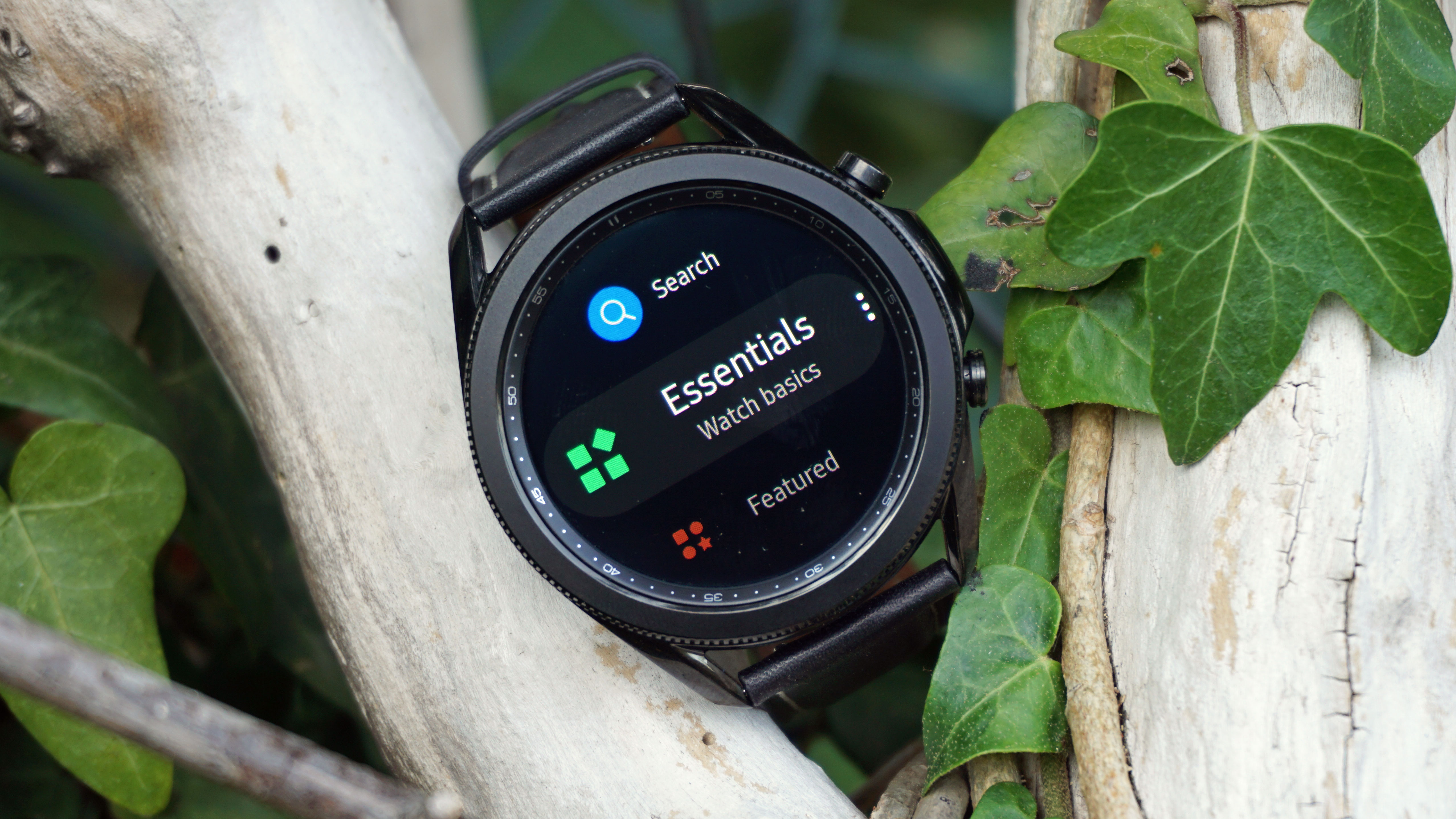
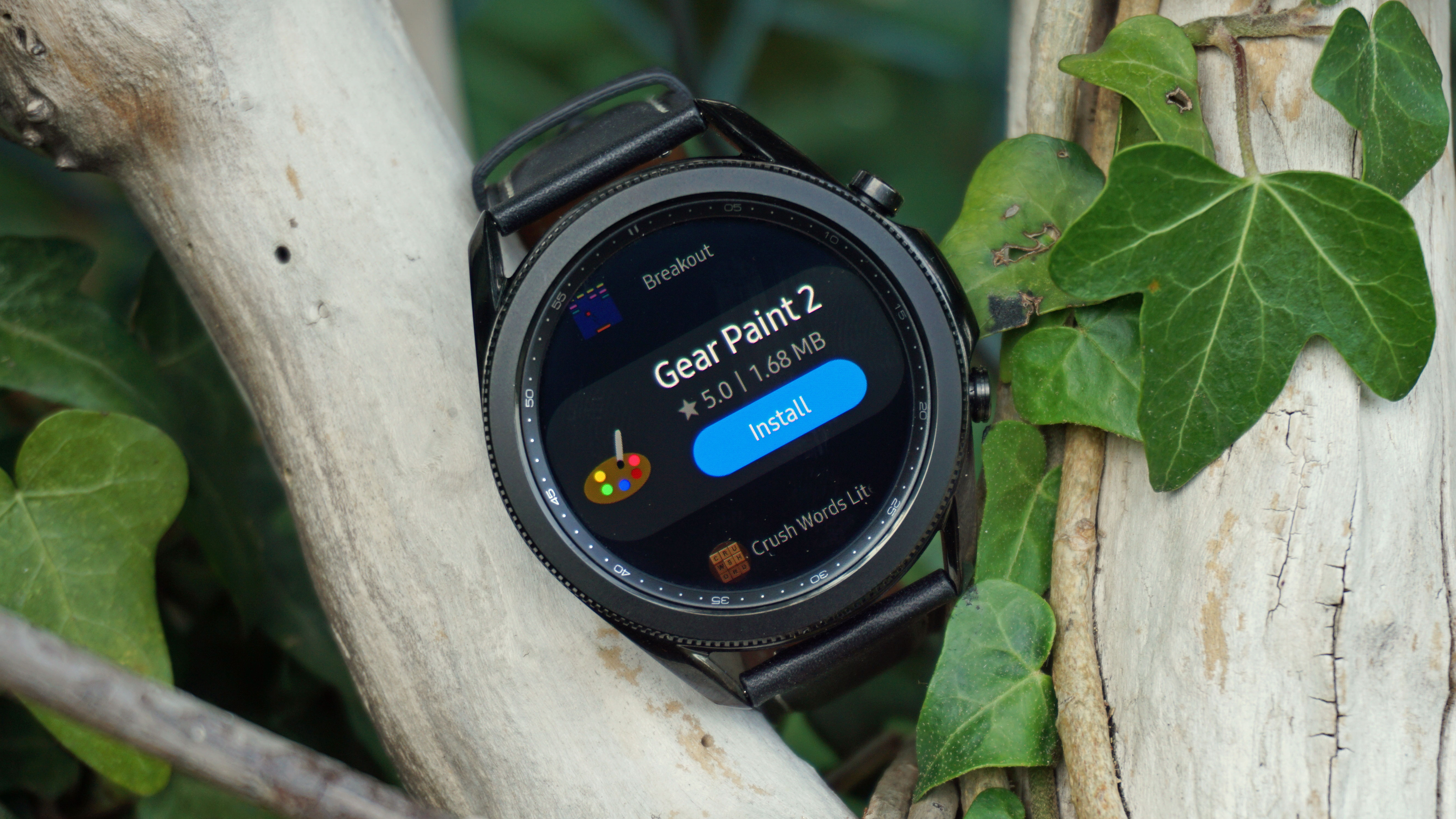
The Galaxy Watch 3 is running Samsung’s Tizen software, which had been used for a few years on Samsung's smartwatches by this point, but notably the newer Galaxy Watch 4 has moved back to Wear OS.
The latest Tizen OS 5.5 software is on offer here, and if you’ve used a Samsung smartwatch in the few years prior to this model you'll know what to expect – this is accomplished software, although Samsung’s ecosystem doesn’t have as many third-party apps as watchOS (on the Apple Watch) or Wear OS.
Instead, you’ll be using a lot of the features already included on the smartwatch, or downloading some third-party services from the Tizen store. Some big-name apps such as Google Maps are missing here, but Samsung has included a lot of alternatives that mean the overall experience is still satisfying.
Navigating around the watch is easy, and thanks to the rotating bezel we found scrolling through menus to be a genuine joy. You can tap and swipe on the screen with your finger if you wish, but we think you’ll find yourself using that bezel instead.
In terms of compatibility, the Samsung Galaxy Watch 3 works with both Android devices and iPhones. Certain features are optimized for Samsung handsets, and similarly some elements work better on Android devices than on iPhones, but generally, Samsung watches work as well with iPhones.
That said, it won’t integrate as well as an Apple Watch. You’ll miss out on being able to reply to iMessages, for example, though message notifications can be seen on the watch face, and features like 'Find My Phone' aren’t possible."
You’ll need an iPhone 5 or above running iOS 9 software for this to be compatible, or if you’re on Android you’ll need a device running Android 5 software with 1.5GB of RAM or more.
If you’re looking for a smartwatch that lets you leave your phone at home, there’s also an LTE-ready version of both devices. You’ll be able to slot in your SIM card and have an internet connection away from your phone, so you can take phone calls and use online features while running or otherwise on the move.
Samsung Galaxy Watch 3: fitness
- Offers fall detection and on-demand VO2 Max readings
- Includes all the expected health and fitness tracking features
Fitness is a key component of the Galaxy Watch 3, and while this isn’t a sequel to the Galaxy Watch Active 2, it does bring a lot of fitness-focused features we saw on that device to the main series.
Seven activities will auto-trigger Samsung Galaxy Watch 3 fitness tracking, whether or not you forget to start the tracking, which is super-handy. These are: running, walking, swimming, cycling, rowing, elliptical workouts, and dynamic workouts (basically aerobics, or anything with big movements).
We’ve tested these for running, walking, and cycling and found that it worked every single time – it’s tack-sharp on kicking in 10 minutes after we started working out, so you’ll have peace of mind knowing your watch is tracking even if you forget to set up a workout.
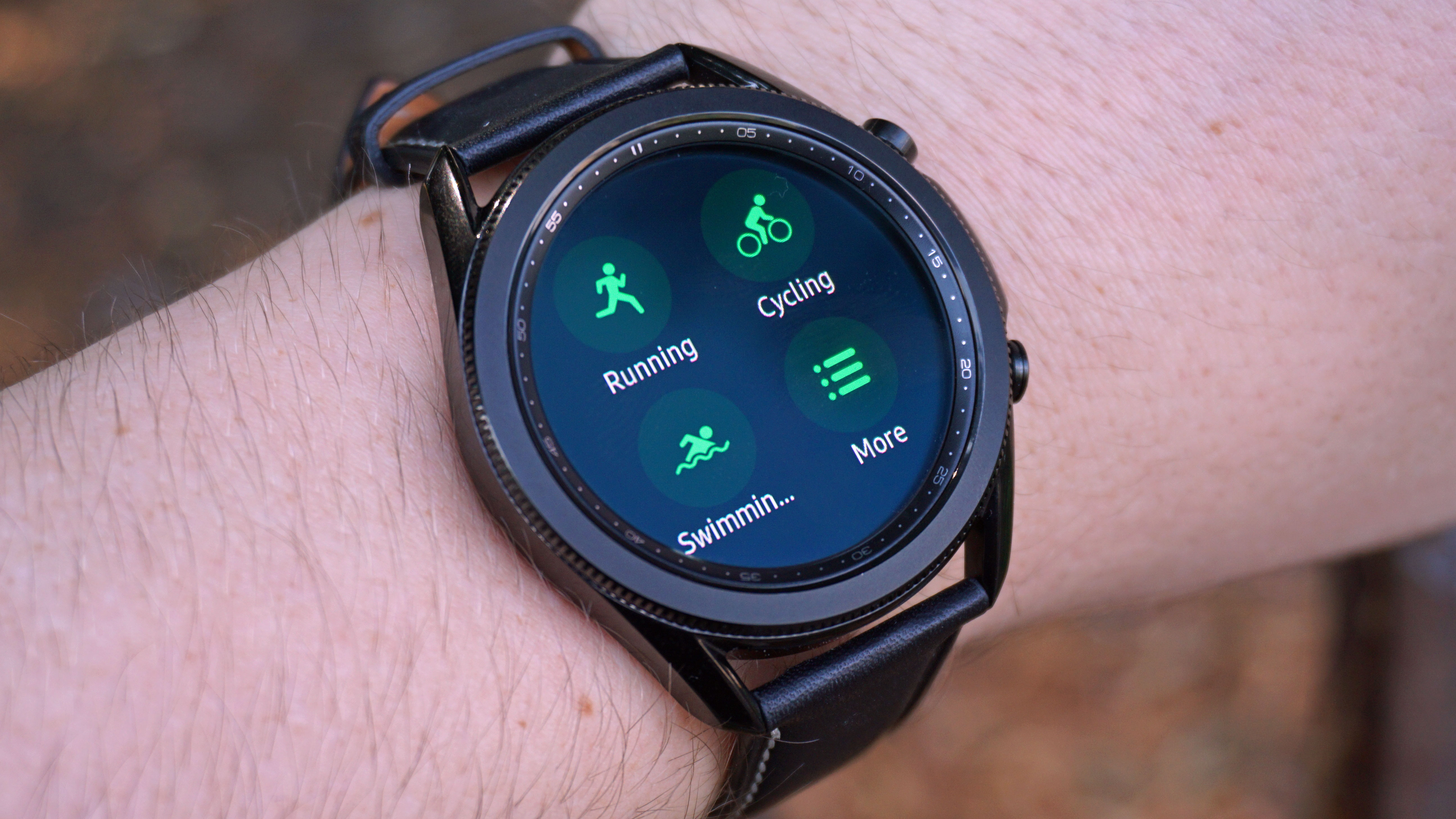
The Galaxy Watch 3 is also there at the end of automatically tracked workouts – it promptly asks if you’ve finished a workout when it thinks you’re done. It was even smart enough to know that we stopped cycling and transitioned to walking, where the Apple Watch just rolls on, messing up your cycling pace.
In between workouts, if you’re on a run or walk and stop to snap a scenic photo, it’ll auto-pause tracking. It feels like it keeps you honest. In total, there are 40 workouts that can be tracked – everything from yoga to crunches, deadlifts to pilates. You’ll want to set up those that we haven’t listed above, as they don’t automatically track, which you can do within the app or via Bixby’s voice assistant.
Samsung’s voice assistant is okay for starting workouts, but it didn’t always work on the first try so you may want to use the apps through the rotating bezel or on the screen instead to ensure you don’t get annoyed.
Samsung has helpfully equipped the Watch 3 with stress tracking, taking into account peak heart rates and suggesting breathing exercises too.
Brand-new here are fall detection, something we’ve seen on the Apple Watch 4 and above, and on-demand VO2 Max readings. The latter calculates the maximum amount of oxygen your body can take in during exercise, and it’s something that’s been trickling down from high-end fitness trackers to mainstream smartwatches recently.
Note, though, that this feature isn’t available everywhere at launch. Both that and the SpO2 monitor – a tool to help you detect sleep apnea – are now rolling out in the US now, but it's unclear when they'll be available in other markets.
We've yet to use these features on the Samsung Galaxy Watch 3 as they've only just started rolling out, but we’ll be sure to update this review when we’ve had the opportunity to test them.
We’ve yet to test the Galaxy Watch 3 in a swimming pool owing to coronavirus restrictions, but we have gotten it wet in a sink and it survived. With a design that’s IP68 water-resistant you should be able to swim with the device in your average pool – but it’s not built for salt water, so keep it out of the ocean.
Samsung only supplies a leather strap with the Galaxy Watch 3, so if you want to work out with the device you’ll likely want to opt for a silicone band from Samsung or a third-party supplier.
There’s also sleep tracking on the Galaxy Watch 3. Samsung is touting a partnership with the US National Sleep Institute, which is supposed to offer deeper insights into elements like REM cycles where we dream most vividly. The watch automatically tracks your sleep cycles, and greets you every morning with sleep quality reports, and tips on how to get better-quality shut-eye.
We found this to work well too, and you’ll be given a ‘Sleep Score’ to show you how well your night’s sleep was. It breaks down data into light, deep and REM sleep, as well as a total of your sleep patterns.
It has a woman's health section too for monitoring menstrual cycles, and its effects on your fitness.
There’s also stress tracking, with your stress levels monitored every 10 minutes by default you can switch it off, or set it to work continuously). Your watch will give you a warning when you’re stressed, and suggest breathing exercises you can do to try and lower your stress levels.
Samsung Galaxy Watch 3: battery life
- 247mAh or 340mAh battery
- Larger model has life of 2-3 days
Controversially, Samsung opted to decrease the capacity of the battery in the Samsung Galaxy Watch 3 compared to the original device. That’s likely a key way the company has managed to slim and lighten this device compared to the Galaxy Watch.
It’s a 340mAh cell – the original device was 472mAh – but despite the reduced capacity we found it to work surprisingly well, although it won’t give you that long lasting four to five days battery life. Instead, you should expect around two to three days of use from the Galaxy Watch 3.
That’s with general usage, and if you’re exercising a lot – and so using the GPS and heart rate monitor even more – you may see battery life closer to a day and a half, but if you’re happy to recharge your smartwatch overnight you shouldn’t have any issues.
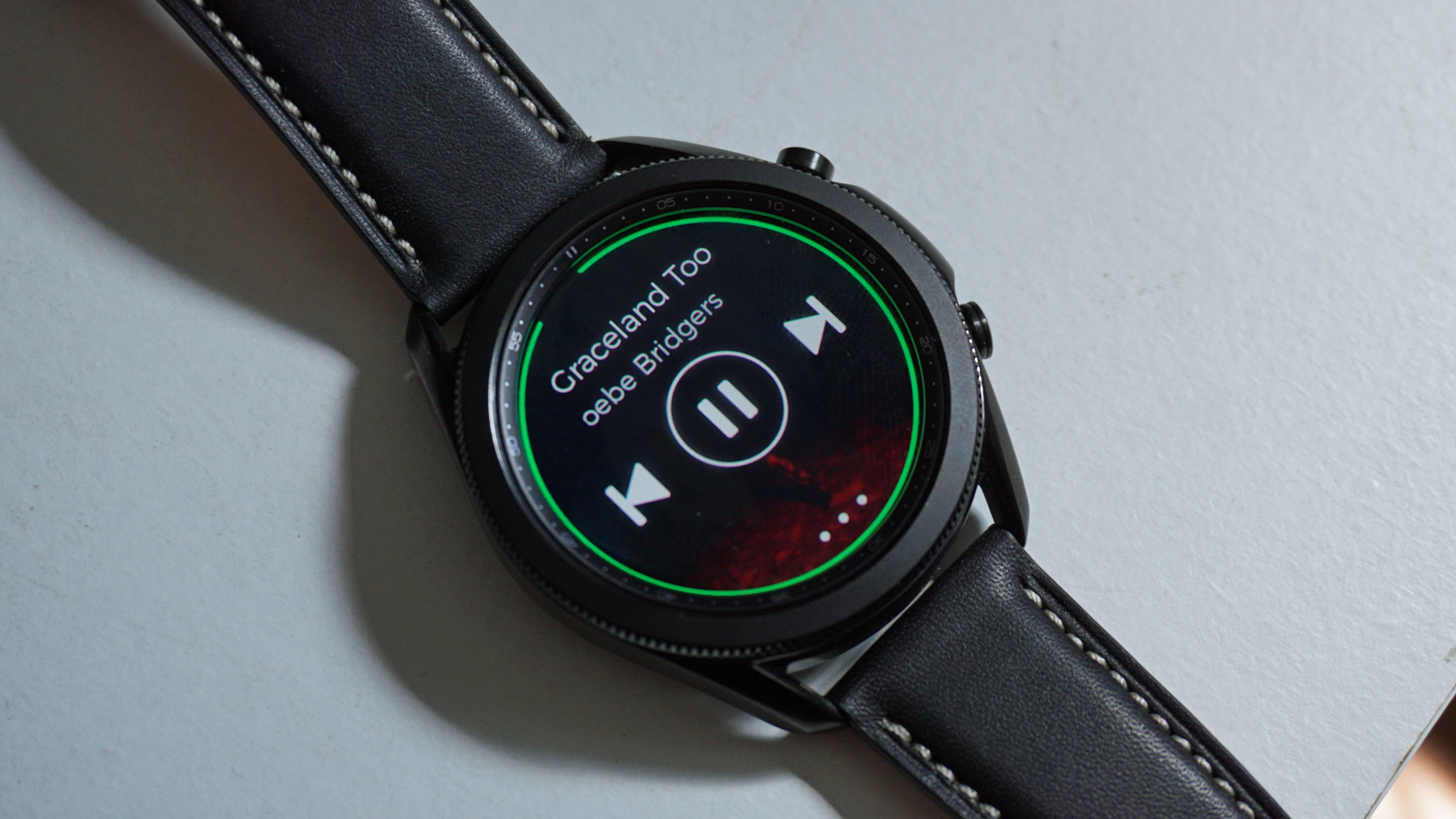
On average, we found the Samsung Galaxy Watch 3 would recharge from empty to full in around two and a half hours.
But we do need to warn you that this device won’t last you for a week on a full charge, as some devices from alternative companies such as Garmin or Fitbit are able to do. Instead, this is similar battery life to what you’d expect from an Apple Watch.
We’ve yet to test the 41mm variant of the Galaxy Watch 3, so we can’t comment on the battery life of that model. There’s a smaller247mAh cell inside that device, which suggests it may have poorer battery life, although there’s less screen to power. We hope to test that device, and update this review with that information, soon.
For charging, you get a charging pad included in the box, and the device is also compatible with Qi wireless chargers if you want to get a couple more to place around your home or work. For the optimum charging performance, we’d recommend using the charger in the box, but Qi pads will also work just fine.
You can also charge the device from certain recent Samsung phones too using the Wireless PowerShare feature. Just stick your smartwatch on the back of a compatible phone and it'll slowly juice up when you're in a pinch. We used this on the Galaxy Note 20 Ultra, and we found it charged the Galaxy Watch 3, but it was nowhere near as fast as a Qi charger.
Should I buy the Samsung Galaxy Watch 3?
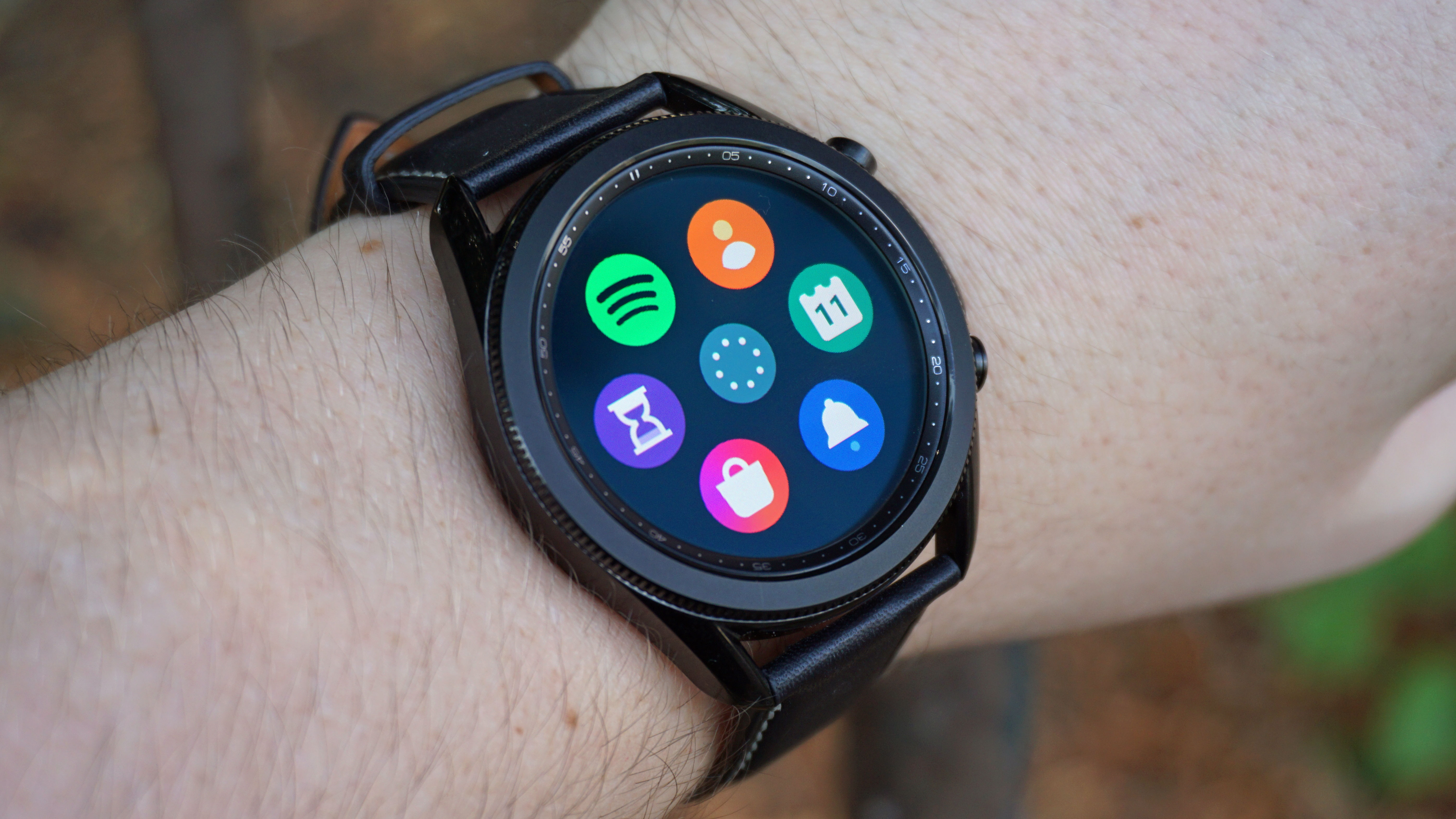
Buy it if…
You like the rotating bezel
No other smartwatch manufacturer offers such a unique feature, and it’s a fantastic way to interact with a wearable that allows you to see everything on the display while you cycle through menus. If you like that idea, this is the watch to get.
You want a great-looking smartwatch
The Galaxy Watch 3 is a gorgeous-looking smartwatch, with a sharp and vivid display that can compete with all top-end devices. If you’re buying a smartwatch for its looks, consider the Galaxy Watch 3.
You want a strong health companion
In addition to being a great general-use watch, the Galaxy Watch 3 is full of fantastic health features, such as automatic tracking for workouts, and supports a huge variety of workouts. If you want both a smart wrist companion and a health tracker, this is it.
Don’t buy it if…
You need long battery life
The battery life on the Samsung Galaxy Watch 3 is okay considering some of the other devices it’s competing with, but it won’t last as long as some options from the likes of Fitbit or Garmin. If you want a long-lasting device, you may want to look elsewhere.
You’re looking for an affordable smartwatch
This isn’t the cheapest smartwatch on the market, and it’s nowhere near the most affordable. In fact, if you want a similar device at a lower price you’re still able to purchase the original Galaxy Watch.
You need certain health features right away
The ECG monitor, blood pressure monitoring and SpO2 tracker aren’t currently available in all markets on the Galaxy Watch 3. If you need these features from the get-go, you may want to look elsewhere.
Also consider
If you've found that this Samsung Galaxy Watch 3 review hasn't tempted you, here are some other wearables to consider.
Samsung Galaxy Watch 4
The Samsung Galaxy Watch 4 is the successor to the Galaxy Watch 3. It has a faster chipset and runs Wear OS rather than Tizen, but the experience when using it will be somewhat similar. It's a definite upgrade overall, but with a higher price.
Read our full Samsung Galaxy Watch 4 review
Samsung Galaxy Watch 4 Classic
If you want a big upgrade then consider the Samsung Galaxy Watch 4 Classic, which has a premium design and all the other upgrades found on the Galaxy Watch 4.
Read our full Samsung Galaxy Watch 4 Classic review
Apple Watch 7
If you'd rather have something Apple then the Apple Watch 7 is a strong alternative. It's newer than the Galaxy Watch 3, so you could also consider the Apple Watch 6 instead, but that's harder to find as Apple has discontinued it.
Read our full Apple Watch 7 review
Looking to save money on a Samsung product? Check out our Samsung discount for the latest deals on top-rated tech and gadgets.
First reviewed: August 2020
James is the Editor-in-Chief at Android Police. Previously, he was Senior Phones Editor for TechRadar, and he has covered smartphones and the mobile space for the best part of a decade bringing you news on all the big announcements from top manufacturers making mobile phones and other portable gadgets. James is often testing out and reviewing the latest and greatest mobile phones, smartwatches, tablets, virtual reality headsets, fitness trackers and more. He once fell over.

